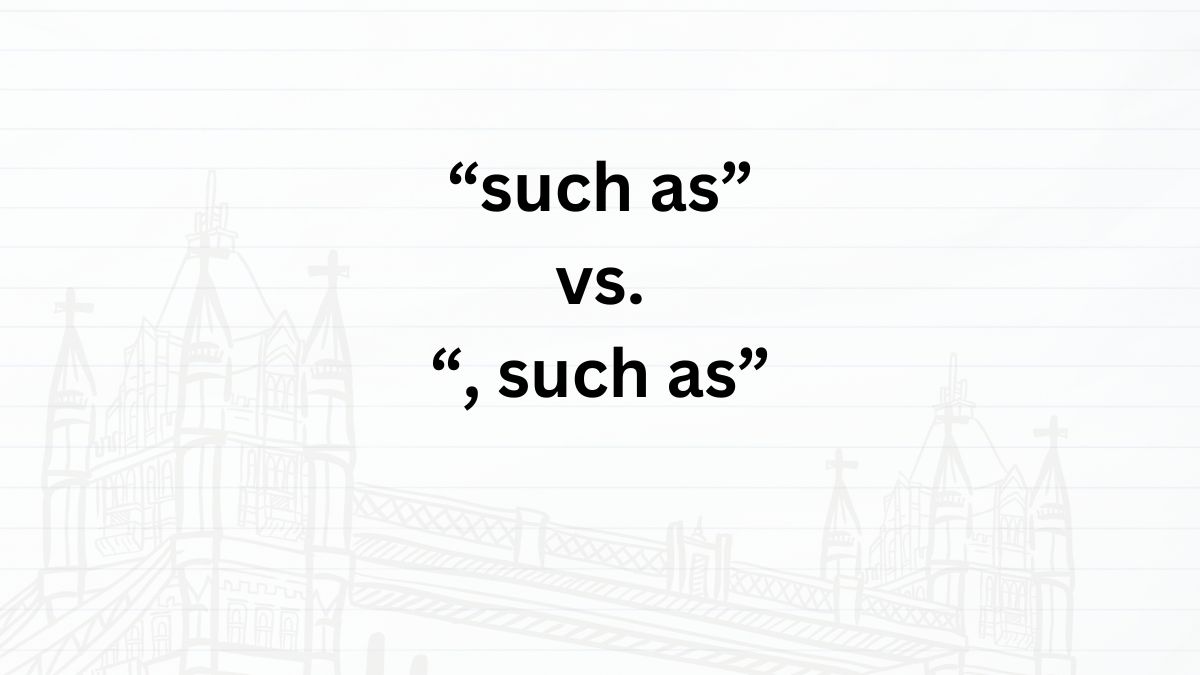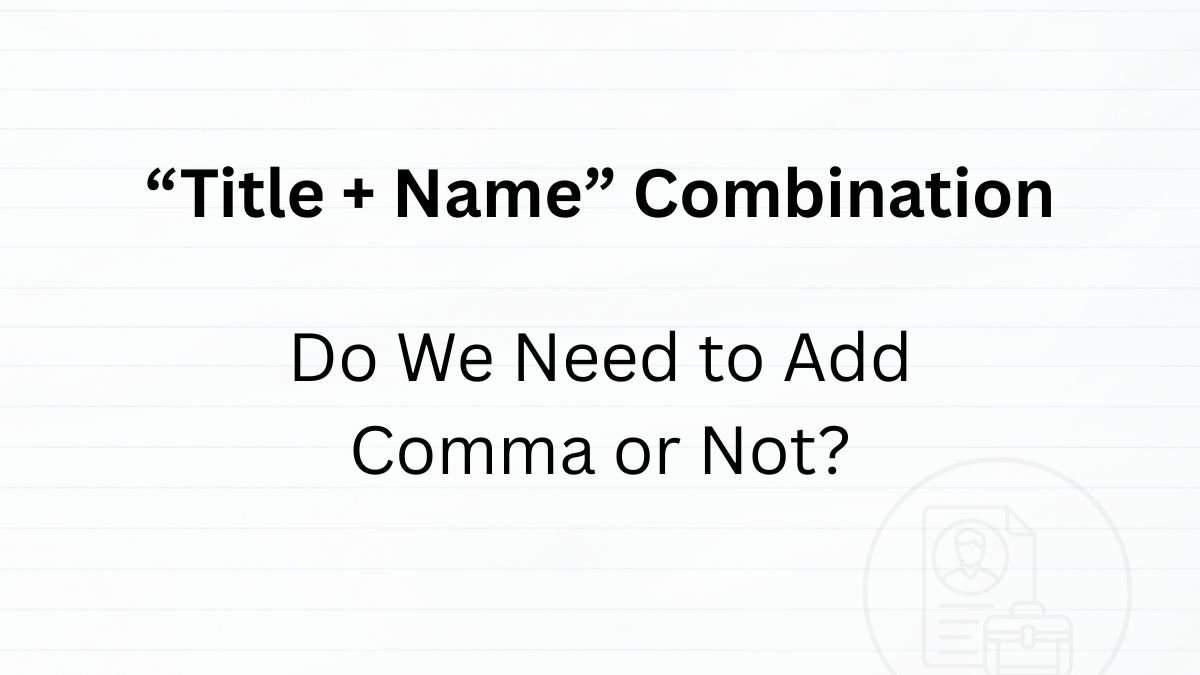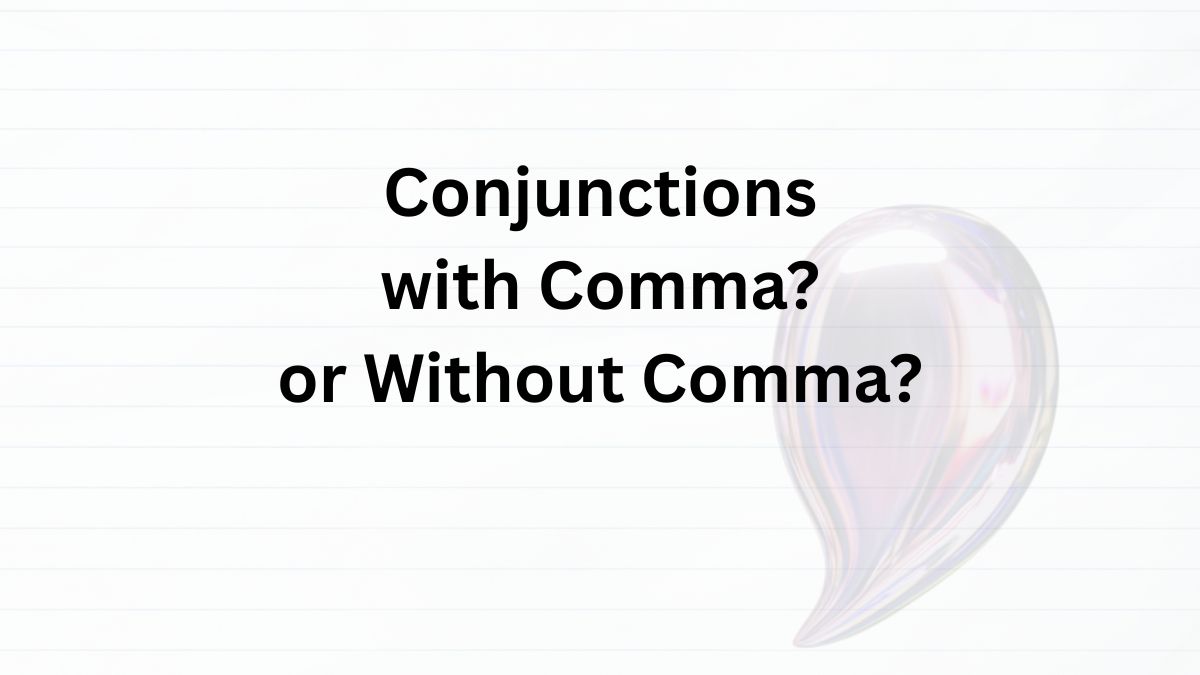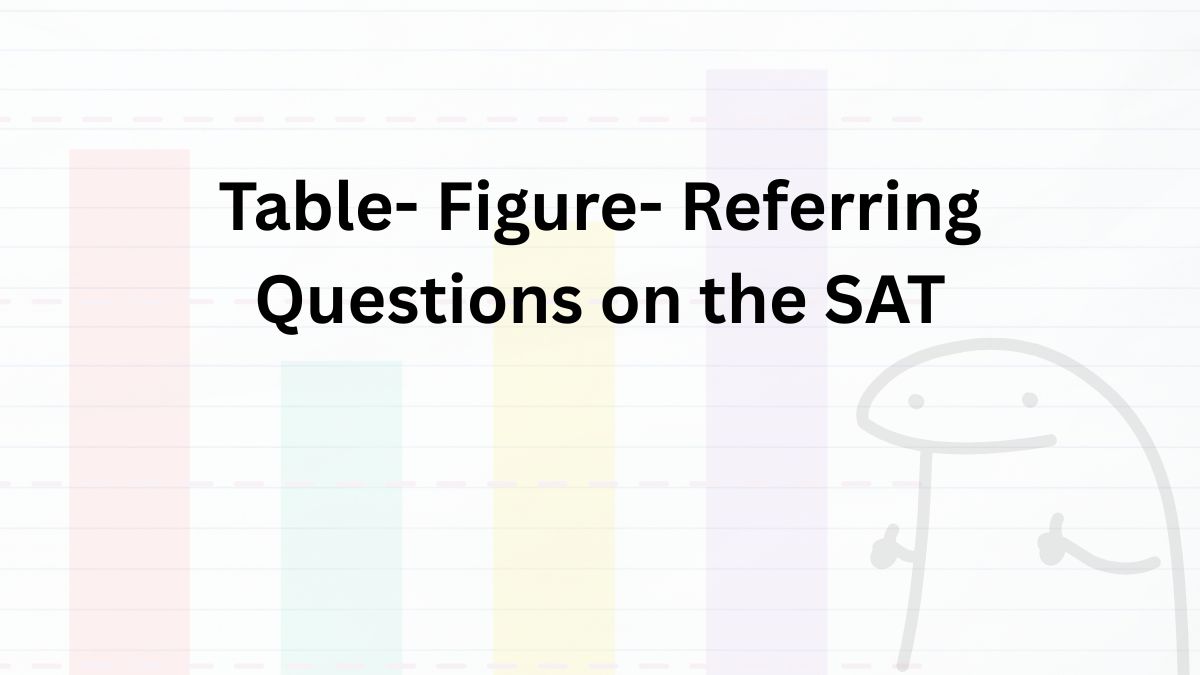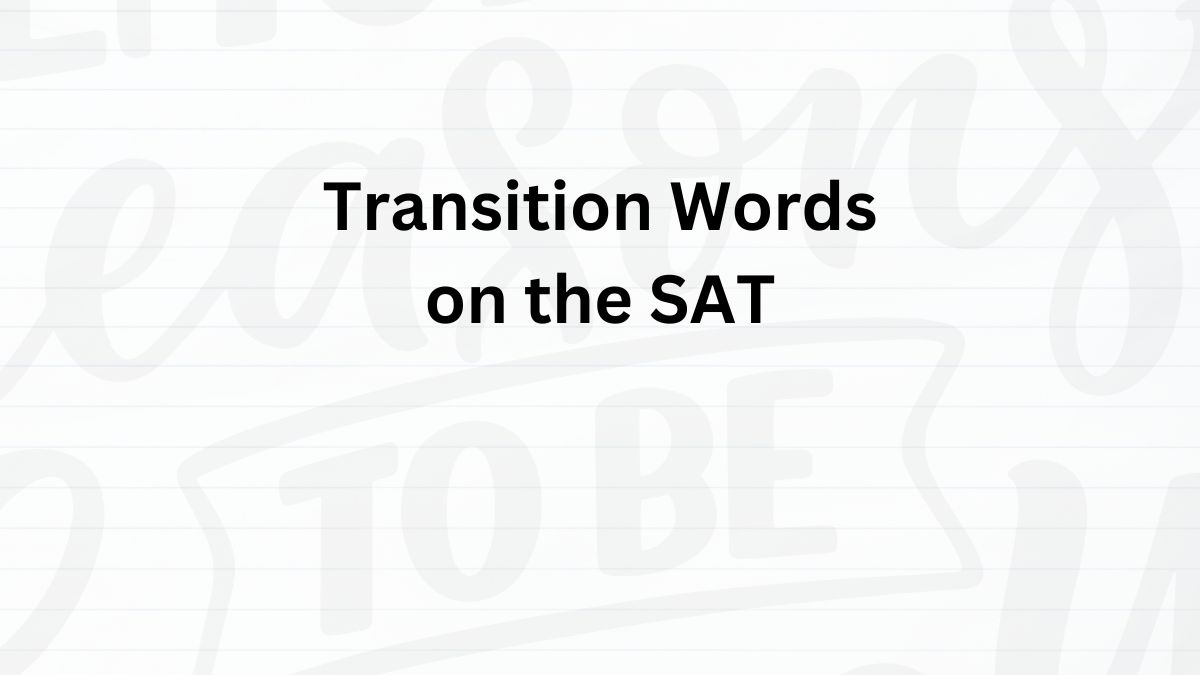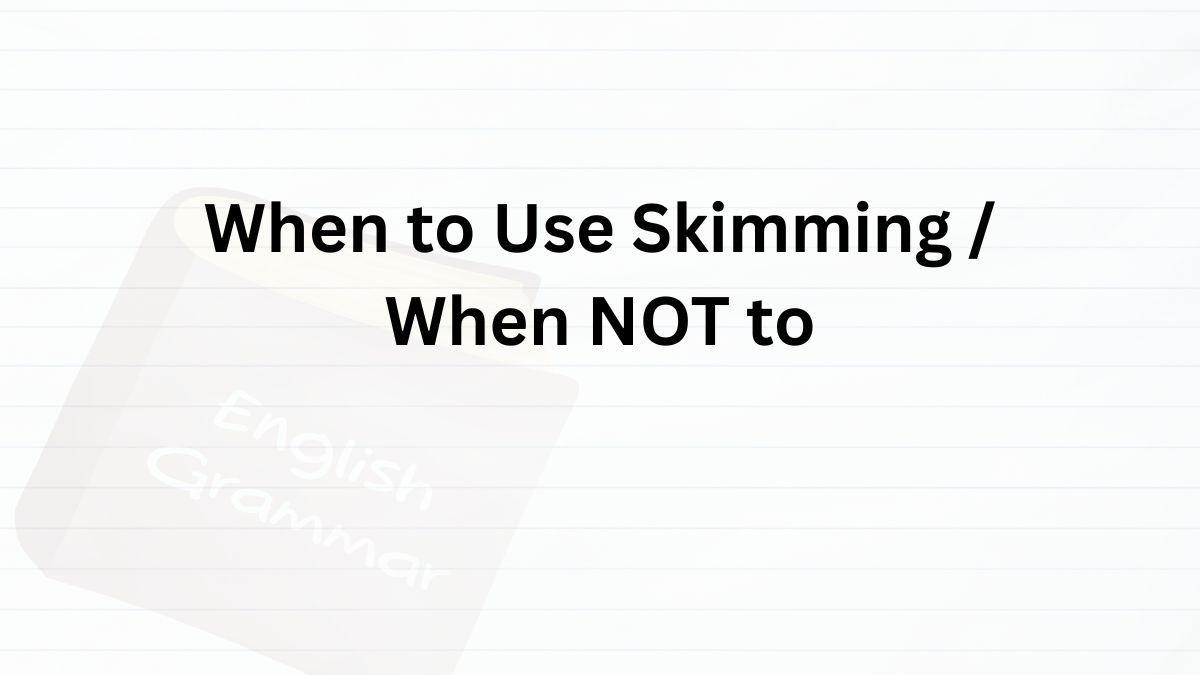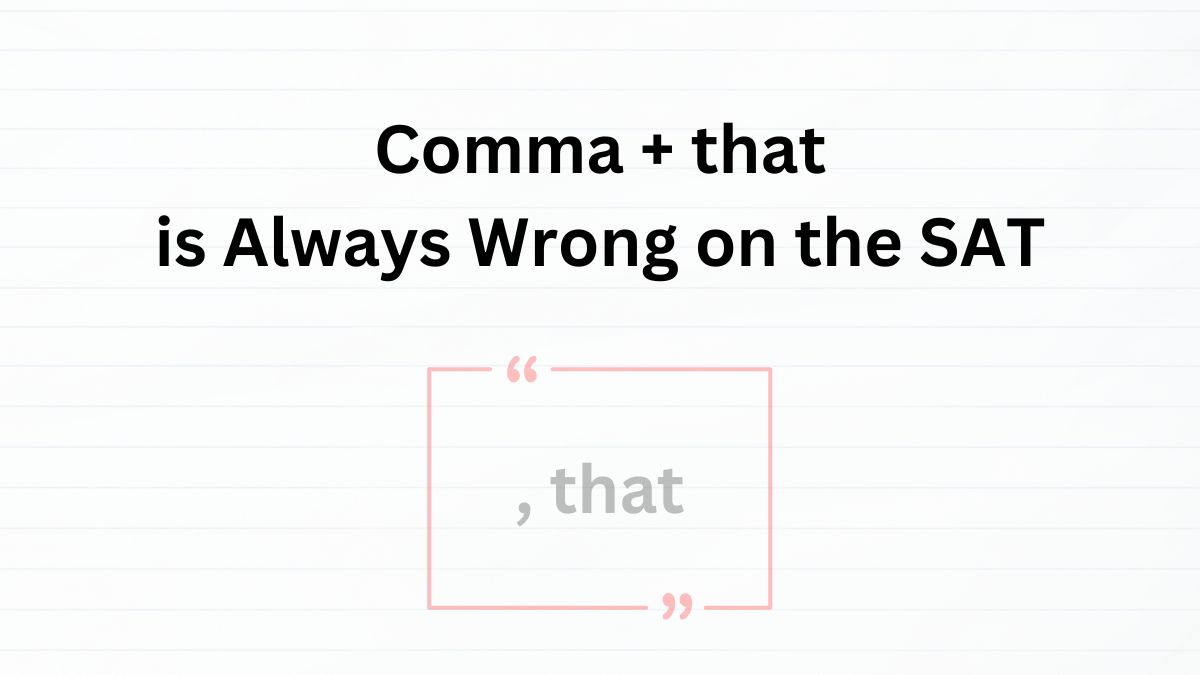
Always Wrong on the SAT: Never Choose Structure “Comma + That”
Table of Contents
For some grammar questions on digital SAT, there are some structures in options that you must never choose. Since they are always wrong options, you can instantly eliminate them from viable candidates. This will reduce time and increase possibility of choosing the right option.
In this article, we will cover one of the most common distractor: comma + relative pronoun “that“
Relative Pronouns
Relative pronouns are words used to add extra information about a noun without starting a new sentence.
A key grammatical rule is that a relative pronoun must be followed by a clause, which is a group of words that forms a complete idea. This clause is called a relative clause. That’s why the following sentence is ungrammatical:
* I have a pet which dog.
Here, dog alone is not enough to form a clause; it’s just a single noun.
The part that follows the relative pronoun which must be a complete sentence.
I have a pet which is cute.
Now, the relative pronoun is followed by a clause “(a pet) is cute.”
Although the subject inside the relative clause is omitted, that’s normal in this structure because the relative pronoun itself already refers to the subject of the main clause.
The most common relative pronouns are
- who
- which
- that
Roughly speaking, all of these serve the same grammatical function. The only difference lies in what they refer to.
- Use who when referring to a person or people.
- Use which when referring to things, animals, or ideas (non-human nouns).
- Use that for both people and things, especially in restrictive clauses (when the information is essential to the meaning of the sentence).
It may seem that the relative pronoun “that” can be used in almost any sentence. However, there is one important restriction you need to remember.
Restriction of Relative pronoun “that”
When a comma appears before “that,” the word can no longer function correctly in formal English. In such cases, you must use “, who” or “, which” instead, depending on what the pronoun refers to.
So, on the SAT, “, that” will never be the correct answer choice.
How “Comma + That” Appears on the SAT
In general, the distractor option “comma that” appears along with an option either “comma which” or “comma who.” Therefore, it is very important to understand this “comma that” error to correctly select the final answer.
Let’s try the following digital SAT questions of this topic.
Explanation
If you look at the parts before and after the blank, you’ll notice that both are independent clauses.
Although the subject of the second clause is omitted, this is a common feature when using a relative pronoun.
Among the options, you can immediately eliminate any choices that don’t include a relative pronoun.
Connecting two independent clauses without a conjunction, proper punctuation, or a relative pronoun creates a grammatical error, either a run-on or a comma splice. So, both “firm” and “firm,” are incorrect.
Now, the question is whether to add a comma before the relative pronoun “that.”
Remember: it is always wrong to place a comma before “that.” If you want to use a comma, the relative pronoun must be either “who” or “which.”
Therefore, “firm that,” the option without a comma, is the only grammatically correct choice.
Explanation
Again, if you look at the parts before and after the blank, you’ll notice that both are independent clauses:
Independent clause 1: Now, as a medical researcher, she leads a team of scientists
Independent clause 2: ___________ are studying innovative ways to improve access to preventative care in underserved communities across the United States.
Because both parts are complete clauses, we need a word that can connect them properly. Since all the options include a relative pronoun, that part is already taken care of.
Instead, focus on the word immediately before the blank. Remember that the choice of relative pronoun depends on what it refers to. Here, the noun right before the blank is “scientists,” which refers to people. When the antecedent (the word before the relative pronoun) refers to people, you must use “who.”
Therefore, the correct answer is “who.”


